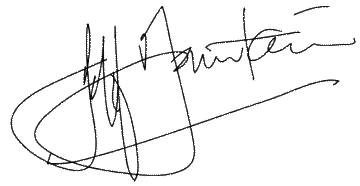Paul’s shipwreck on the island of Malta in AD60 was probably no accident in the providential scheme of things. Whether or not the islands were then converted to Christianity–which tradition holds but Luke doesn’t actually say–the Maltese are proud of their direct association with the apostle.
Today the small archipelago remains overwhelmingly Catholic. Both divorce and abortion are illegal. There is a church building for every day of the year, about one for every 1000 Maltese. Public buses occasionally inscribed with texts proclaiming that ‘Only Jesus can save you’, and bumper-stickers on horse-drawn buggies urging tourists to ‘Make Christ the centre of your life’, indicate an actively witnessing community of believers continuing the work their patron saint began.
Last weekend on Malta, Romkje and I were introduced to some Catholic charismatic members of this community who met weekly in a converted basement parking garage with up to 1000 others! Our host, Andrew, took us to a 15th century convent used now as a retreat centre. There we met Manuel, a man in his thirties, who produced a photo of an attractive ‘woman’ from his Bible and said with a smile, ‘That was me–before Jesus changed my life.’
While the Maltese identification with Christianity spans nearly 2000 years, it has a religious tradition dating back to the oldest free-standing human constructions in the world. Megalithic temples probably dedicated to the worship of a mother goddess of fertility predate Stonehenge and the Egyptian pyramids by 1000 years! The earliest dates from around 3400 BC.
Layers
The strategic location of the Maltese islands at the crossroads of the Mediterranean–exactly halfway between Gibraltar and Lebanon–has lured (would-be) conquerors throughout the ages. Phoenicians, Greeks, Romans, Arabs, Normans, German Schwabians and Sicilians all added to the layers of archeology, language and ethnicity found in today’s Maltese.
And that was before the Knights of St John arrived, bringing yet eight more European nationalities and bequeathing their cross as the national emblem.
In preparation for our visit to Malta, I googled to find out more about the knights and their cross. We had been invited to address the annual Europartners conference, a gathering of businessmen and women from across Europe.
The first website that surfaced informed me that the knights had been established as hospitallers by Italian merchants in 1070 to care for pilgrims en route to the Holy Land. Once the Crusades were under way, the knights became militarised. Eventually however they were driven out of Jerusalem by Muslim forces, then later from Acre in Lebanon and a few years later again from Rhodes. Finally in 1530 the knights reluctantly settled on Malta at the invitation of Charles V of Spain–for the annual fee of a Maltese falcon.
The website explained the eight points of the St John’s Cross as signifying the vows the knights had to observe: 1) to live in truth, 2) have faith, 3) repent of sins, 4) give proof of humility, 5) love justice, 6) be merciful, 7) be sincere and whole-hearted, and 8) endure persecution. Other traditions derive the eight points from the eight beatitudes, or the eight nations of the knights. (Incongruously, the website was that of a motorcycle club which apparently rides under the sign of the cross: www.choppers.com!)
Whatever the origin, the knights’ chance to show their true mettle came when a huge Ottoman flotilla appeared on the horizon one day in May 1535, bristling with 40,000 warriors intent on capturing the strategic islands. The 540 knights, supported by only 9000 footmen, managed to defend their homeland for five bloody months before a Christian relief force from Sicily arrived, forcing the Turks to flee.
Faith, Hope & Love
The knights never forgot their calling as hospitallers, however. Even today throughout the British Commonwealth, the Order of St John provides first aid and medical care. The sight of the St John’s officer running on to the rugby field to bring First Aid was part of my growing up in New Zealand.
The Great Siege remains one of Malta’s two glorious historical moments. The second came with the outbreak of World War II, when Italian and German planes tried to bomb Malta into surrender. As in the Great Siege, the islanders were totally outnumbered. At first the air defence consisted of three Gladiator biplanes–dubbed Faith, Hope and Charity, from Paul’s famous words. Malta was one of the most bombed places on earth. Allied victory in North Africa in 1942 moved the war front back to Italy and Malta was saved. King George VI awarded the Maltese islanders the George Cross for bravery.
When I chose to speak on Faith, Hope and Love in the Marketplace to the Europartners, I was not aware of this wartime story. Neither did I appreciate just how much Paul’s ‘accidental’ arrival on these shores had impacted Malta’s history.
How could you ever recount the history of this southern flank of the European Union without constant reference to God and the Judeo-Christian heritage?
Till next week,
Jeff Fountain
Till next week,
